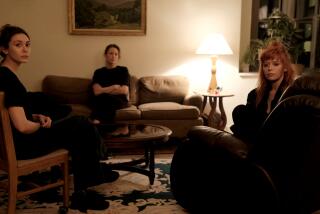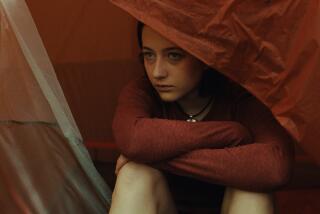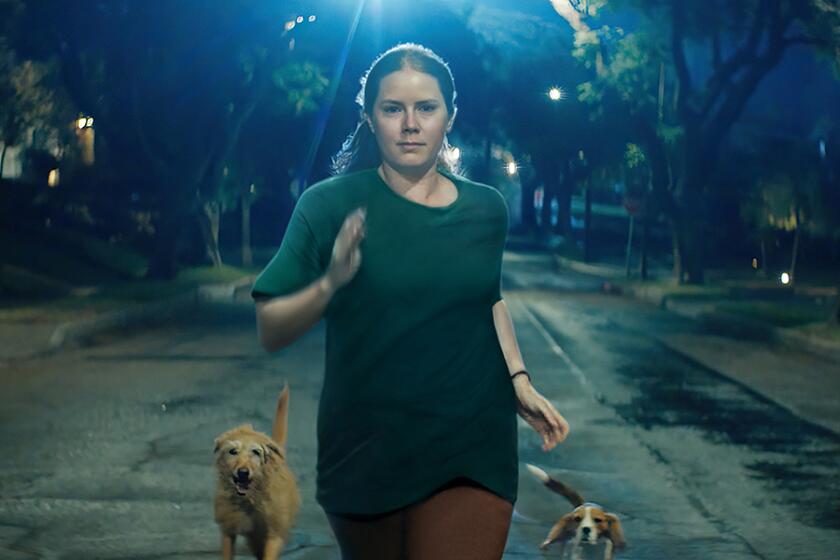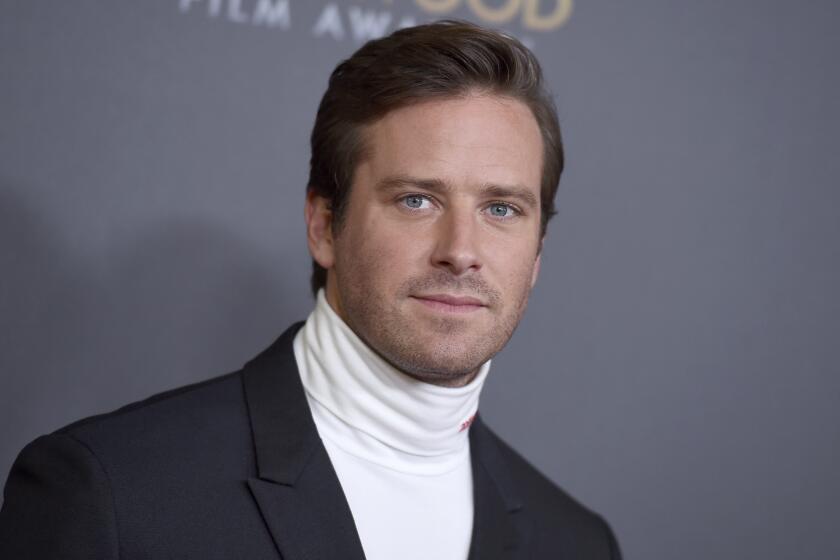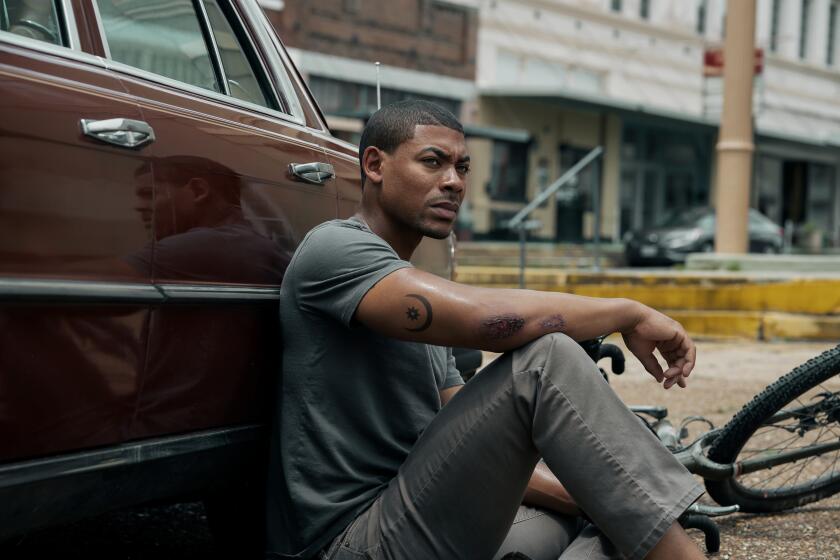Review: ‘Three Identical Strangers’ is a riveting account of identical triplets separated at birth
The intensely compelling documentary “Three Identical Strangers” begins by reconstructing a fateful autumn day in 1980, when Robert Shafran, a 19-year-old freshman at Sullivan County College in upstate New York, walked onto campus for the first time and found himself warmly greeted by several people he didn’t know, all of them calling him “Eddy.” After much confusion and some quick detective work, Shafran soon found himself staring into a face identical to his own: Eddy was his long-lost brother Edward Galland, from whom he had been separated soon after birth.
The story made national headlines that only grew more startling. Seeing what appeared to be two versions of himself in a newspaper photo, a Queens College freshman named David Kellman, realized that he was the third brother. After 19 years apart, the bonds of blood reasserted themselves immediately: Kellman’s aunt recalls that when the young men first met, they started wrestling on the floor like puppies. As they soon realized in the wake of their happy, shattering reunion, the triplets — born July 12, 1961 — had been adopted by three different families, none of whom had been told that their son was one of a matching set.
Identical triplets are rare to begin with, perhaps as unlikely as three long-lost siblings stumbling upon each other in a state as populous as New York. But if “Three Identical Strangers” drops its biggest bombshell early, the director Tim Wardle holds plenty more in reserve. The tricky, twisty structure of this documentary, a scientific and philosophical inquiry by way of a detective story, suggests a joyous earthquake followed by a series of grim, unsettling aftershocks. It careens wildly from near-comic disbelief to unspeakable tragedy, dragging a trail of intense, contradictory emotions in its wake.
The story’s happier early moments were well documented, and some in the audience may recall how Shafran, Galland and Kellman — better known as Bob, Eddy and David — became a mid-’80s cause célèbre. They rented an apartment together in Manhattan, made the tabloids’ party pages with their nightly exploits and eventually opened their own restaurant, Triplets. The movie replays their brief cameo in the 1985 Madonna vehicle “Desperately Seeking Susan,” as well as their crowd-pleasing interviews with Phil Donahue and Tom Brokaw.
Much is made of the brothers’ shared physical, emotional and temperamental attributes: the similarities in their gait and posture, their preference for Marlboro cigarettes. Above all, there is the nearly uniform quality of the boys’ gregarious charm, which would have made them ideal camera subjects even under less emotionally fraught circumstances. One of the pleasures of “Three Identical Strangers” is that you soon fall in love with those goofy, toothy grins, beaming out from family photos, newspaper clippings and wedding videos.
The brothers were presented to the public, and, indeed, at times, presented themselves, as a striking argument for biological determinism, a victory for those who believe in the primacy of nature over the push back of nurture. But in wading into that epistemological debate, “Three Identical Strangers” reminds us that even the most galvanizing visual evidence can be deceiving. Through careful reiterations of footage and voiceover, as well as sometimes sinister dramatic re-creations, the movie misdirects our attention at every turn — an appropriate strategy for a story that turns out to be rooted not in coincidence but in conspiracy.
Real-life events shouldn’t require spoiler warnings, but those who wish to preserve the freshness of a first viewing should tread carefully over the next few paragraphs. The question that immediately struck the Shafran, Galland and Kellman families — why were the boys not told about their brothers? — is gradually, ominously answered. The film traces the inquiry to the now-closed doors of Louise Wise Services, formerly a prominent adoption agency specializing in finding families for Jewish orphans. Documents and interviews point to the existence of a mysterious study, undertaken in secret, that arranged for identical twins and triplets to be separated, adopted and scrutinized for years afterward.
Working with the editor Michael Harte, Wardle whips the story along at breakneck speed, stoking our sympathy with the brothers’ mounting sense of outrage and betrayal. The ironies are mind-boggling, not least the fact that the study, which Kellman likens to a Nazi experiment, was spearheaded by the late child psychiatrist Peter Neubauer, himself an Austrian Jew who had fled the Holocaust. (Wardle interviews two researchers who worked under Neubauer while the study was in progress. One comes off as sheepishly half-apologetic; the other infuriatingly chalks it up to a different era.)
A many-sided rumination on psychiatric ethics, mental health and different schools of parenting, “Three Identical Strangers” is effortlessly riveting, if a bit too slick for its own good. There is something ingenious about the way Wardle uses repetition in a movie about identicality, reframing the same footage through different prisms of meaning. But there is also something self-satisfied and rather too clever about all this narrative duplicity. It doesn’t seem to be building to a grand revelation so much as delaying and obscuring something that has been apparent all along.
The documentary hides its most haunting truths in plain sight, in Wardle’s extensive on-screen conversations with Shafran and Kellman. (Galland died in 1995, and his absence is the film’s most striking structural element.) The two are interviewed separately, a pointed decision that gives the picture its distinctly melancholy undertow.
In some ways, its true subject isn’t nature or nurture but the simple reality of time and its refusal to heal all wounds. The resemblance between Shafran and Kellman is still unmistakable, even if, due to differences in their voices and physical builds, they are easier to tell apart than they once were. It’s a privilege to see them in solitude and in togetherness, individuals bound by something as ordinary as kinship and as extraordinary as circumstance, finding sorrow as well as joy in the realization that they are strangers no longer.
------------
‘Three Identical Strangers’
Rating: PG-13, for some mature thematic material
Running time: 1 hour, 36 minutes
Playing: Arclight Cinemas, Hollywood; the Landmark, West Los Angeles
See the most-read stories in Entertainment this hour »
Movie Trailers
More to Read
Only good movies
Get the Indie Focus newsletter, Mark Olsen's weekly guide to the world of cinema.
You may occasionally receive promotional content from the Los Angeles Times.

